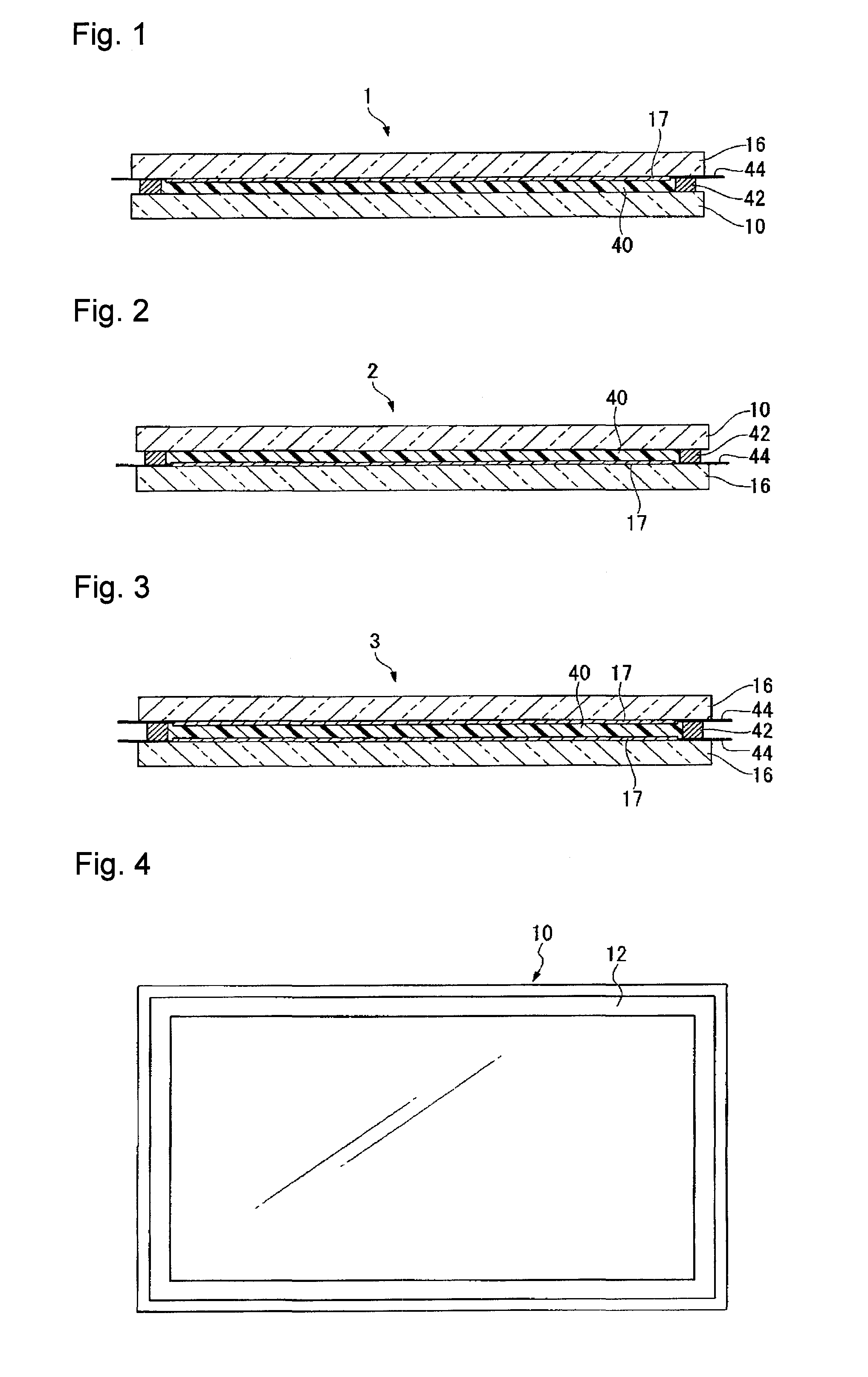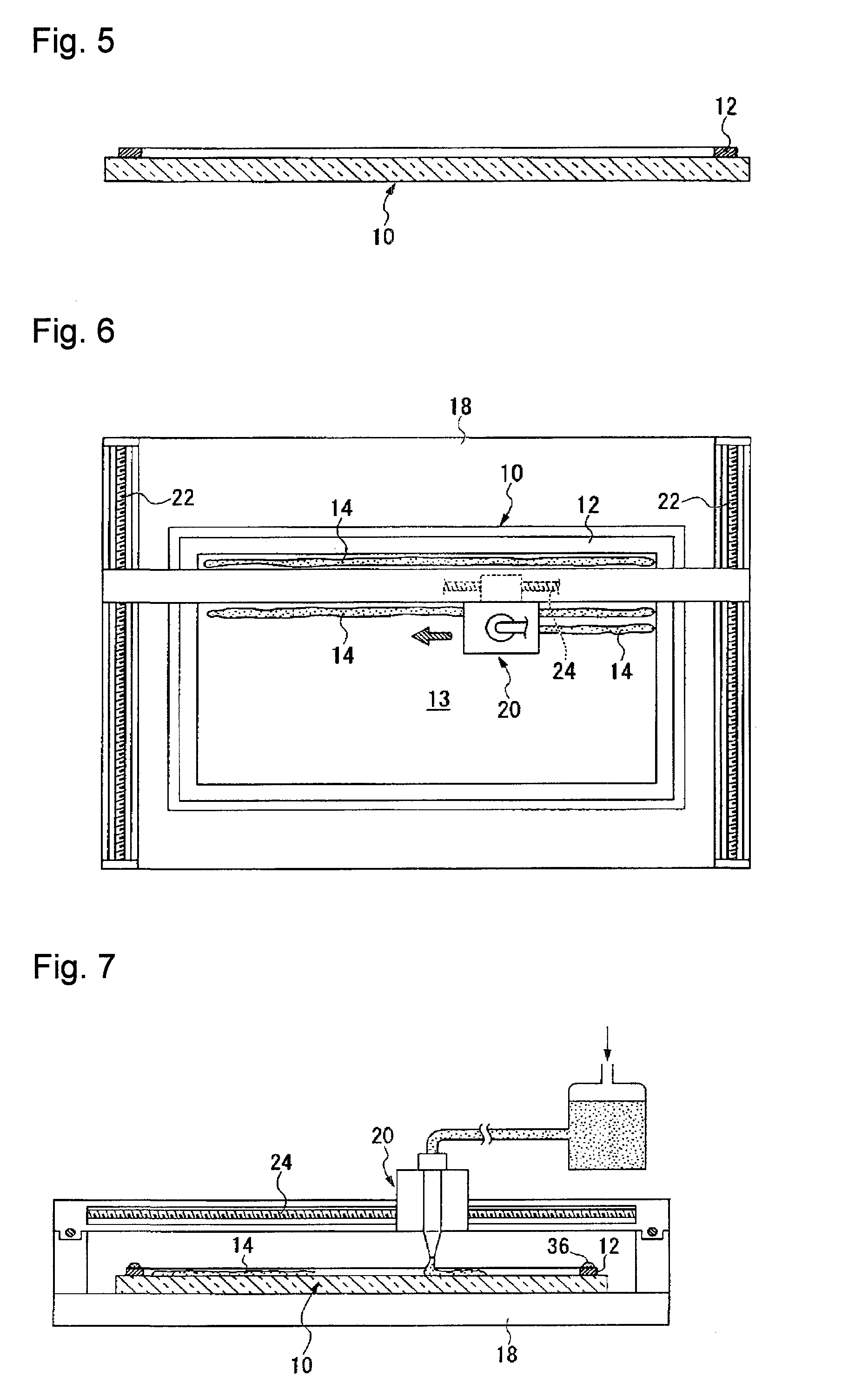Process for producing solar cell module
- Summary
- Abstract
- Description
- Claims
- Application Information
AI Technical Summary
Benefits of technology
Problems solved by technology
Method used
Image
Examples
first embodiment
[0057]FIG. 1 is a cross-sectional view illustrating an example of the first embodiment of the solar cell module in the present invention.
[0058]The solar cell module 1 comprises a glass substrate 16 as the front surface material, a transparent surface material 10 as the back surface material, a resin layer 40 interposed between the glass substrate 16 and the transparent surface material 10, a thin-film type solar cell device 17 formed on the surface of the glass substrate 16 on the resin layer 40 side, a seal part 42 enclosing the periphery of the resin layer 40, and an electric wire 44 connected to the thin-film type solar cell device 17 and extending through the seal part 42 to the exterior. Here, in a case where the glass substrate 16 as the above front surface material becomes a second surface material, the transparent surface material 10 as the back surface material becomes a first surface material, and in a case where the glass substrate 16 as the above front surface material b...
second embodiment
[0087]FIG. 2 is a cross-sectional view illustrating an example of the second embodiment of the solar cell module in the present invention.
[0088]The solar cell module 2 comprises a transparent surface material 10 as the front surface material, a glass substrate 16 as the back surface material, a resin layer 40 interposed between the transparent surface material 10 and the glass substrate 16, a thin-film type solar cell device 17 formed on the surface, on the resin layer 40 side, of the glass substrate 16, a seal part 42 enclosing the periphery of the resin layer 40, and an electric wire 44 connected to the thin-film type solar cell device 17 and extending through the seal part 42 to the exterior. Here, in a case where the transparent surface material 10 as the above front surface material becomes a second surface material, the glass substrate 16 as the back surface material becomes a first surface material, and in a case where the transparent surface material 10 as the above surface ...
third embodiment
[0104]FIG. 3 is a cross-sectional view illustrating an example of the third embodiment of the solar cell module in the present invention.
[0105]The solar cell module 3 comprises a glass substrate 16 as the front surface material, a glass substrate 16 as the back surface material, a resin layer 40 interposed between the pair of glass substrates, a total of two layer thin-film type solar cell devices 17 formed on the surfaces, on the resin layer 40 side, of the respective glass substrates 16, a seal part 42 enclosing the periphery of the resin layer 40, and electric wires 44 connected to the thin-film type solar cell devices 17 and extend through the seal part 42 to the exterior. Here, in a case where the glass substrate 16 as the above front surface material becomes a second surface material, the glass substrate 16 as the back surface material becomes a first surface material, and in a case where the glass substrate 16 as the above front surface material becomes a first surface materi...
PUM
 Login to View More
Login to View More Abstract
Description
Claims
Application Information
 Login to View More
Login to View More - R&D
- Intellectual Property
- Life Sciences
- Materials
- Tech Scout
- Unparalleled Data Quality
- Higher Quality Content
- 60% Fewer Hallucinations
Browse by: Latest US Patents, China's latest patents, Technical Efficacy Thesaurus, Application Domain, Technology Topic, Popular Technical Reports.
© 2025 PatSnap. All rights reserved.Legal|Privacy policy|Modern Slavery Act Transparency Statement|Sitemap|About US| Contact US: help@patsnap.com



